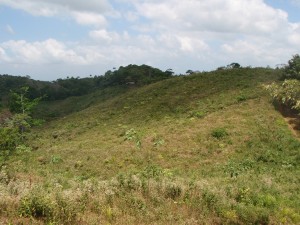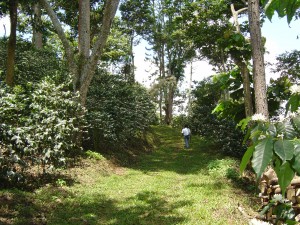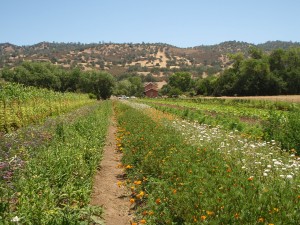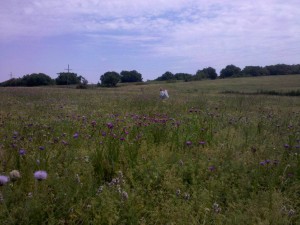More than 80% of wild and cultivated plant species are benefited by animal-mediated pollination, and there are economic as well as ecological reasons for better understanding how to manage landscapes for enhanced pollination services. One aspect of the lab’s research examines how local and regional land management practices impact the composition of native pollinator communities. We are currently involved in four projects monitoring native bee population and community ecology.
1) In a coffee-growing region in Chiapas, Mexico, we are examining native bee community structure and diversity across a wide range of coffee management styles to determine the relative role of local vs. regional abiotic and biotic drivers.
 2) Along the Panama Canal, within and adjacent to Parque Nacional Soberanía, we’re examining the composition of native bee communities in abandoned pasture, secondary forests, and older growth forests. We are connecting our pollinator community data with pollen-mediated gene flow studies we are currently conducting on the understory tree, Miconia affinis (see more on Landscape Genetics/Genomics page) to determine the mechanism behind species-specific and intra-specific variation in pollen dispersal.
2) Along the Panama Canal, within and adjacent to Parque Nacional Soberanía, we’re examining the composition of native bee communities in abandoned pasture, secondary forests, and older growth forests. We are connecting our pollinator community data with pollen-mediated gene flow studies we are currently conducting on the understory tree, Miconia affinis (see more on Landscape Genetics/Genomics page) to determine the mechanism behind species-specific and intra-specific variation in pollen dispersal.
3) In central California, we are examining native bumble bee community ecology, population genetics, and nutritional ecology across a variety of landscapes, to investigate potential drivers of nest mortality, dispersal limitation, and inbreeding.
4) Across urban, suburban, and rural agricultural Texas landscapes, we are using pollen analyses and network modeling to examining how wild pollinators interact with native and exotic plants across habitat types and phenological periods.



